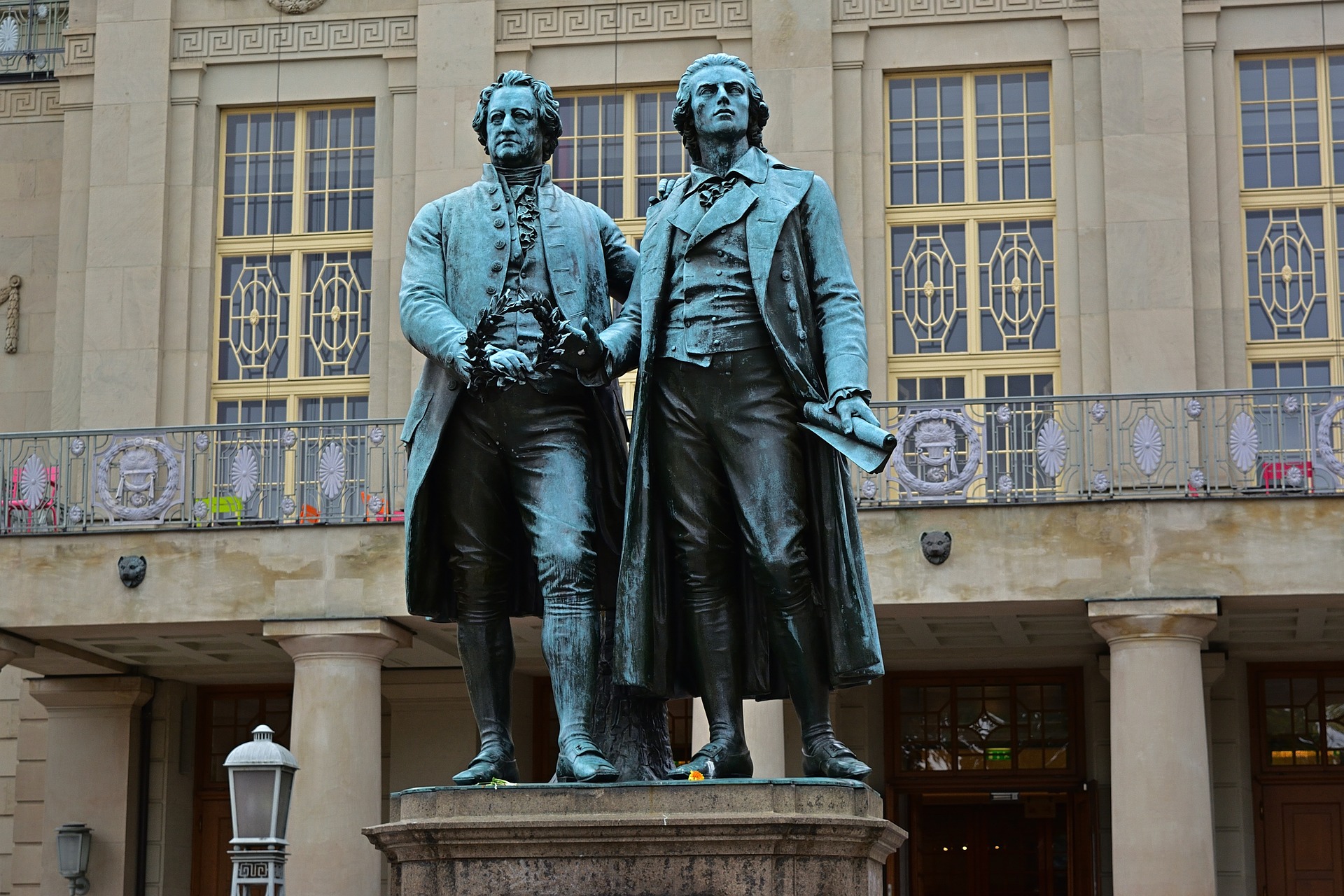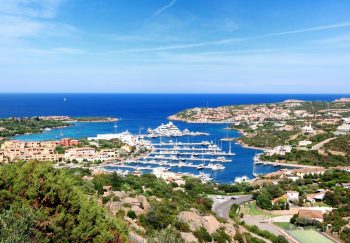Italy was the preferred destination for English-speaking writers a century before Paris was Europe’s literary capital. In the 19th century, writers, poets and journalists flocked to Italy because of the cost, the pace, and the views, and/or the inspiration. Although the World Wars of 20th Century took some of that romance (or perceived romance), it was still a favourite place for many of the best writers of the time. Italy has been many things for many writers. It was a place that is rich in culture and art, but it also became a paradise destroyed by war. The books they wrote on Italy played an important role in shaping the way modern travelers view and experience Italy.
Do you want to follow in the footsteps of some of your favourite scribes while in Italy? This guide will help you get started.
Sicily: Johann Wolfgang von Goethe
While most people don’t think of Goethe as a beach read, the writer and statesman was a pioneer in publishing a popular account about his journeys through Italy. He traveled the length and visited many of the places that wealthy Europeans, especially young ones, visited on their Grand Tours to Italy. Goethe went further, however, and he traveled to Sicily. Goethe was so enthralled by the island, which at that time had few visitors, that he wrote: “To have seen Italy but not Sicily would be to have never seen Italy at all. For Sicily is the clue for everything.”
His first year of travels was filled with notes and diary entries that became the foundation of his book, Itay, Italian Journey (1816). He inspired many young Germans to follow his example.
Follow in Goethe’s footsteps. Take your copy of Goethe’s Italian Journey with you to Segesta and Agrigento. These were two places that Goethe loved in Sicily, and his passages about them are delightful to read. Don’t forget Mt. Etna!
Venice: Lord Byron
Lord Byron, the literary villain of the 19th Century, is also the Romantic writer who has the closest connection to Italy. He invited other writers to join him during his six years of living in the country. This created a community that was similar to the Paris writers’ community of 1920s Paris.
He first emigrated to the United States in 1816, to escape social scandals involving debts and his sexual escapades. He learned the language and dabbled with politics there, becoming (in)famous again for his numerous liaisons with women, most of whom were married.
Between 1819-1821, he lived in Ravenna to be near Teresa Guiccioli (a local noblewoman who later married Byron). He was not a prolific poet and never published a complete book about Italy. However, he wrote The Ravenna Diary and My Dictionary and Recollections. He finished Cantos 6-12 in Don Juan in Pisa. Shelley once wrote that Byron lived in Pisa with “ten horses,” eight large dogs, three monkeys and five cats. He also added that 5 peacocks, 2 guinea hens, and an Egyptian crane were all part of the house. Lord Byron traveled extensively through Italy with his writers friends, especially Mary Shelley and Percy Shelley. His final Italian home was Genoa.
Follow in Byron’s Footsteps Byron was the first to introduce the term Bridge of Sighs to English. This translation of the Italian Ponte dei Sospiri is a translation of the Italian Ponte dei Sospiri. Take along Childe Harold’s Pilgrimage and go to Venice’s bridge at sunrise. Take in his timeless opening to the third verse as you gaze at the bridge.
I stood on Venice’s Bridge of Sighs. / A palace and prison were on my hands. / As if by the magic of the enchanter, her structures rose / For a thousand years, their cloudy wings expanded / All around me, and a dying Glory smiles. / O’er far times, when many a sub-land / Seemed to the marble piles of the winged Lion. / Venice was in state, throned on its hundred islands
Walks of Italy’s Venice Walking Tours are a great way to see Venice with a local guide.
Percy and Mary Shelley the Mediterranean Coast
Percy Shelley, an English Romantic poet, and Mary Shelley, Mary Shelley (the writer of Frankenstein), lived in Italy between 1818-1823. They were social exiles like Byron. Percy’s first marriage ended in a messy affair which saw Percy’s second wife commit suicide. They were able to live in Italy without being judged or be subject to the same social stigmas as those living in England. Despite personal difficulties, including the death of two children, the Shelleys produced a large body of work during their 5-6 year stay in Italy.
To meet Lord Byron, they first traveled to Venice. Percy was inspired to write Julian and Maddalo by his conversations with Byron during their time in Venice’s canals.
The Shelleys spent brief periods in Venice and Florence. Percy completed Prometheus Unbound in Rome while he was living in Livorno. He also wrote The Cenci, a tragedy about the death of the Cenci. Mary also wrote Matilda (an autobiographical novel), Valperga (a historical novel) and the screenplays for Proserpine, Midas, and Midas.
Percy Shelley was tragically killed when his sailboat crashed in a storm close to Viareggio. Mary lived briefly in Genoa after Percy Shelley’s death before eventually returning to England. Mary published a book about Italy called Rambles in Germany, Italy many years later. Despite the hardships, she once called Italy “a country that memory paints as paradise.”
How to Follow in Shelley’s Footsteps: Mary Shelley adored the Simplon Pass, a mountain pass linking Italy and Switzerland. It is still possible to walk it, and if you visit in summer, there are better hikes in Alps. Wordsworth was also a fan.
Trieste James Joyce
The literary scene in Italy was drastically changed by the turn of the century. James Joyce was 22 years old, penniless and arrived in 1904. He taught English in the town and invited others to join him. Not least because he didn’t have enough money to support his family, but also because he needed someone more career-minded to keep the fort. His brother first came to pay for expenses. Then two of his sisters joined him to run the household. Joyce tried many money-making strategies throughout his time in Trieste, but he never stopped drinking. The Adriatic port was a great inspiration for him. While living in Trieste, he wrote the majority of Ulysses as well as all of A Portrait of the Artist as A Young Man.
He attempted to move to Rome once, but he was defeated and returned to Triest before the year was over. Joyce, a consummate writer of “everymen”, found inspiration in Trieste. It was home to sailors, laborers and other European workers. The local dialect is said to have influenced Ulysses’ more complex language texts.
Although he only lived there for ten years, the author shared a unique creative bond with the city.
How to follow Joyce’s footsteps: Today’s Trieste hosts the Museo di Joyce. This museum showcases the rich connections between Joyce and Trieste. After spending the morning there, head to the Caffe San Marco or Caffe Stella Polare for a cup of coffee and conversation.
Friuli Venezia Giulia, Ernest Hemingway
Hemingway’s trips to Cuba, Spain, Africa and Africa are so well-known that it is easy to forget that his first novel, The Sun Also Rises was inspired by his experiences in Northern Italy. Hemingway was an Ambulance driver in 1918 for the Allies. Within six months, he was on the Italian Front in Friuli Venezia Giulia. His experiences on the battlefields and recovering from wounds became The Sun Also Rises. His experiences were also reflected in his nonfiction. For example, Death in the Afternoon is a passage about picking up the remains from people who were blown up in a munitions factory blast.
Hemingway later moved to Paris with his first wife Hadley. However, he continued to make frequent trips back to Italy after he had established a home there. Hemingway’s third story, Three Stories and Ten Poems , was actually written while he was in Italy during spring. In 1948, the author and Mary, his third wife, traveled to Venice for several months. His romance with Adriana, a 19-year-old Italian girl, inspired his novel Across the River & into the Trees. This was his only book set in Italy.
Follow Hemingway’s Footsteps to Travel in Style: Head to Stresa, on Lake Maggiore about an hour from Milan. You can also check in to the Hemingway Suite, which is the same room that Hemingway stayed in when he was on leave for his work as an Italian ambulance driver. It is possible to see the place where he signed his name on a return trip.
Tuscany, Joseph Heller
Joseph Heller saw active service on both the Italian front and in the Second World War. He gained valuable experience in the airforce, which gave him the inspiration for Catch-22, his anti-war novel. Although you might be forgiven for forgetting this, Catch-22 is set on Pianosa, an island off the coast Tuscany.
Catch-22 is more satire than a book about Italy. However, we couldn’t miss the chance to mention Pianosa. It is one of our favorite islands within the Tuscan Archipelago and well-worth a visit. It was originally a prison colony and high security prison, but it is now a protected island that can be visited by 250 people per day. You can also check out our Tuscan driving tours starting from Florence or Rome for more adventures around Tuscany.
How to Follow In Heller’s Feet: Spending a day on Pianosa on the Tuscan Archipelago is one of the most fun things you can do. It’s one of the most remote islands in the chain, making it a true hidden treasure. We recommend Catch-22 but it won’t be able to give you a true sense of the island.
These authors were not the only ones to be influenced by Italy. Today, writers still travel to Italy for healing, meditation and food, and, ultimately, inspiration. Check out the latest classics: Under the Tuscan Sun and A Thousand Days in Venice. Beautiful Ruins is also available.
Do you want to add Italy books to your summer reading? You can find our list of 10 essential books in Italy.












